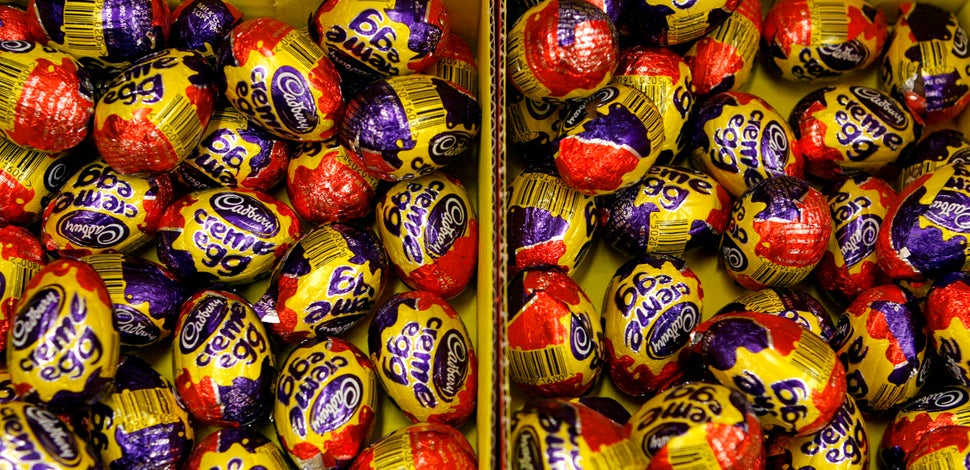“Who are these people out there eating them whole? You’re asking for death by Creme Egg.” Shaheed Khattak, a systems maintenance engineer on Cadbury’s production line maintains there is only one official way to eat the Easter chocolate confectionery: “You have to bite the top, eat out the centre and then eat the shell on its own. Obviously.”
And Khattak would know. The 22-year-old, who lives in the Saltley suburb of Birmingham, has been helping make the chocolate eggs himself for six years. And before him, his uncle worked on the same team. “He used to bring home boxes of Creme Eggs for me as a kid. I was addicted to them,” he recalls.
These days he isn’t quite such a fan - making 1.2 million Creme Eggs every single day, will do that to you. “You get sick of looking at them. You get sick of the smell to be honest, that is the worst bit,” he recoils. “You walk in and see the fondant cream oozing into the depositor and think I can’t handle it today.”

If you laid a year’s worth of Creme Eggs, all made on this single factory floor, from end to end it would reach from Birmingham to Sydney, Australia. Placed on top of each other, the pile would be ten times higher than Mount Everest. So how does one group of people go about making that much chocolate?
The answer is, with serious machinery. Khattak explains that the Creme Egg line alone takes up two entire floors of the Bournville factory: a site that has been at the same location since brothers George and Richard Cadbury bought it in 1878 and is broken up into two primary divisions, one for tablet chocolates like Cadbury Dairy Milk (or CDMs for those in the know) and the other for seasonal produce like Easter eggs and Christmas selection boxes. The latter is where Khattak and engineering apprentice Althea Stephenson, 19, work.
Although Creme Egg fans will know they are only on the shelves from January to Easter, the production line is running for 51 weeks a year in 12-hour shifts.
“The first thing we do is deposit Cadbury’s chocolate into an egg mould and shake it to get even distribution on the outer shell. Then we take the fondant nozzle to deposit the white cream,” he explains, casually putting an end to one of life’s biggest mysteries: the white and orange cream do not go in at the same time.
The innards are made from a top secret recipe - when pressed Khattak will only allude to its composition being similar to that of cake icing - the ‘yolk’ component is added at the very end, just before the egg enters a device that works like the spine on a book to weld the halves together.
The tray of freshly-made eggs then enters a cooling tunnel - which takes up an entire floor by itself - to drop the temperature and ensuring the fondant colours don’t mix. “Some people think the white and yellow taste different, they don’t, it’s just psychological,” says Khattak.
Once they are cooled, the Creme Eggs are boxed up on huge wooden palettes, wrapped in cling film and taken away to be stockpiled for distribution in the four-month selling window. And where do Cadbury’s keep this magical-sounding mountain of eggs? “Erm, I don’t know where they go,” says Khattak. I want to believe him.
““Some people think the white and yellow taste different, they don’t, it’s just psychological...."”
So what do people make of working in a chocolate factory? Stephenson - who in comparison to Khattak is somewhat of a Cadbury’s novice but has still spent time on the Wispa, Buttons and Roses production lines - says that people tend to be “really impressed” by her job. “People don’t tend to think of engineers making their chocolate. And especially because I’m a girl doing it.”
Both agree they enjoy working on the Creme Egg line, and if they had to move elsewhere they’d only want to avoid the caramel department. “Everyone hates working on it because it’s really hard to clean up,” says Stephenson. “The last thing you need is cold caramel, it’s basically like cement all over your plant.”
And it doesn’t seem they’ll need to deal with that anytime soon as both are totally committed to Creme Eggs. Khattak says: “At the end of the day we see it as a responsibility to deliver Easter. God forbid somebody doesn’t get a Creme Egg when they want one.”